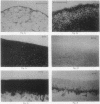Abstract
A partially purified porcine synovial catabolin interleukin 1 (CF) preparation was injected intra-articularly into rabbit stifle (knee) joints. Radiolabelled CF was rapidly cleared from the joint (0.4 h). Repeated injections of CF caused a marked loss of articular cartilage glycosaminoglycan (GAG) and a great increase in synovial fluid GAG. 35SO4 uptake was inhibited. Time course experiments after a single injection produced similar loss of GAG from knee cartilages, which was maximal three days after injection. The above changes were significantly less with heat inactivated preparations. Loss of articular cartilage metachromasia was found histologically, and an acute synovitis occurred together with lymphocytic foci and plasma cell infiltration.
Full text
PDF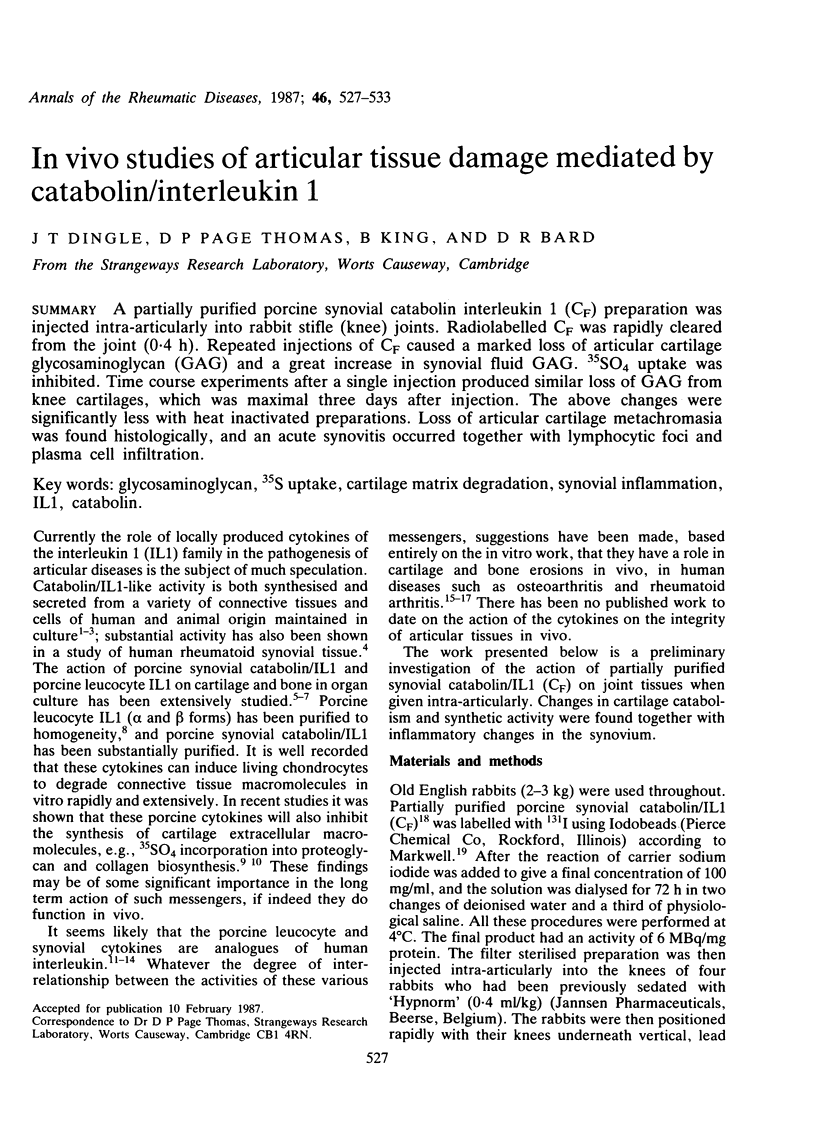
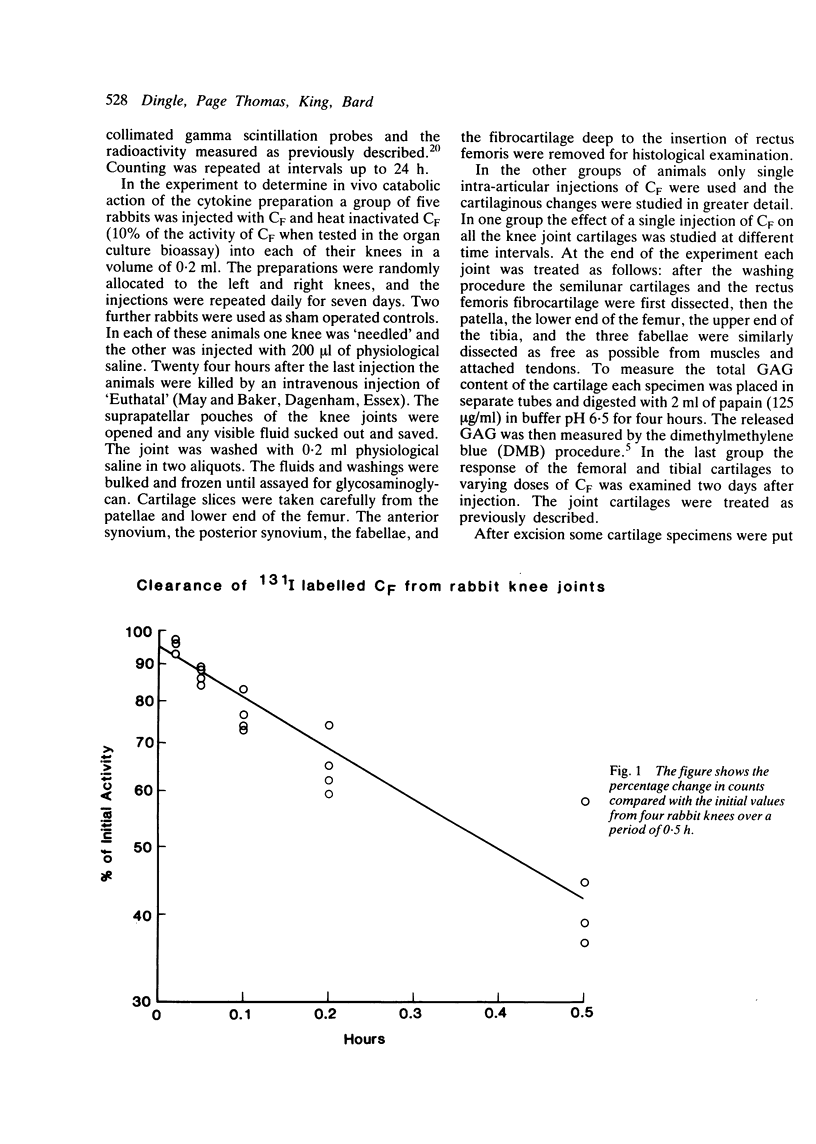
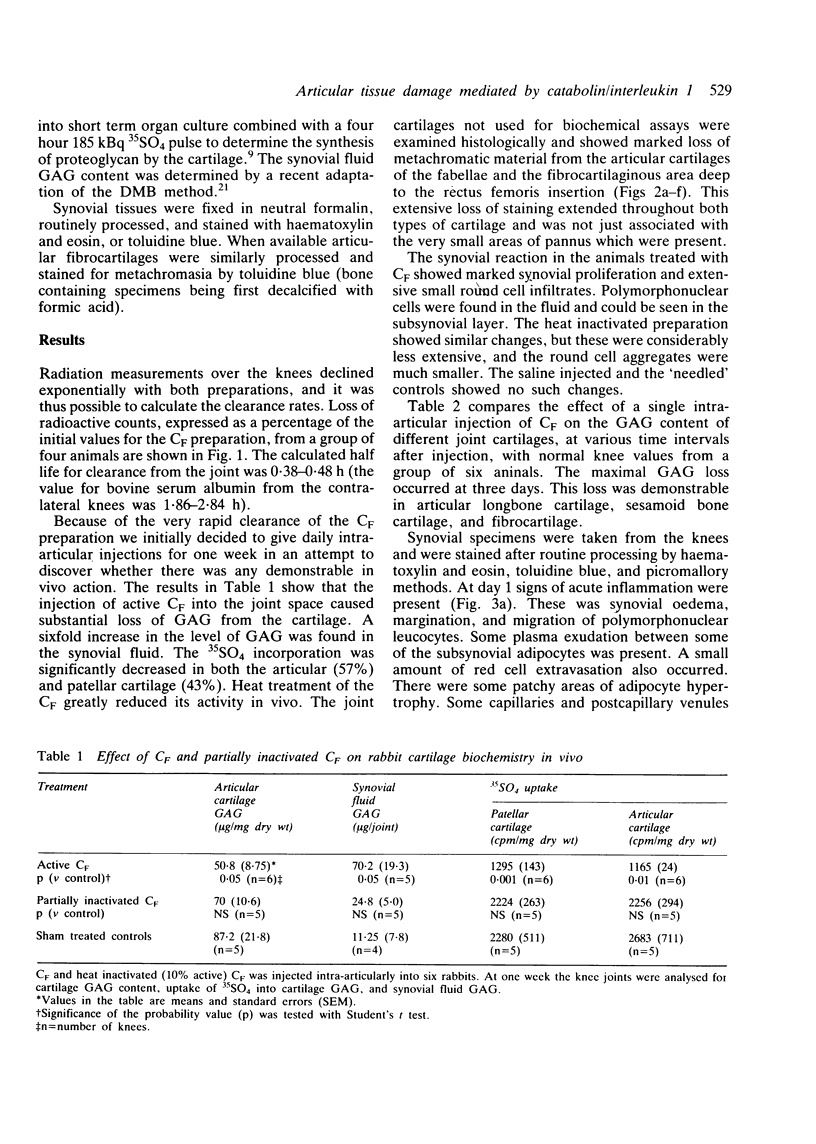



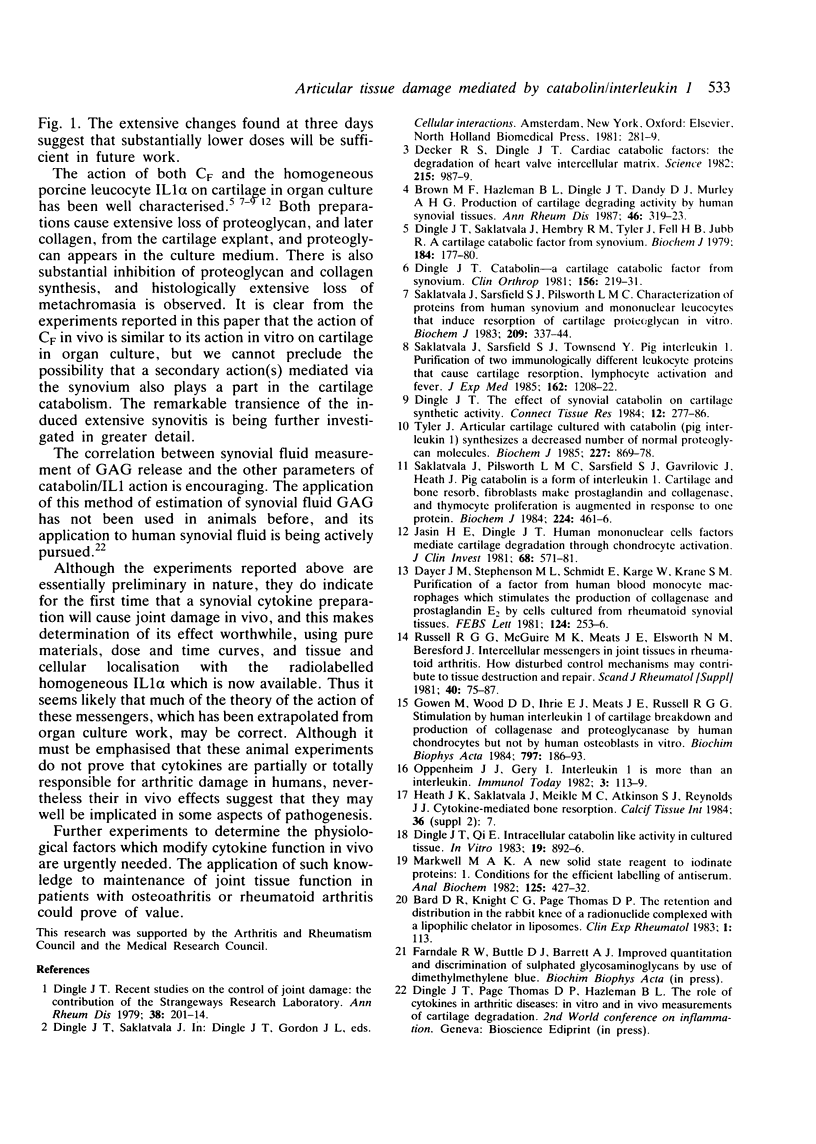
Images in this article
Selected References
These references are in PubMed. This may not be the complete list of references from this article.
- Bard D. R., Knight C. G., Page Thomas D. P. The retention and distribution in the rabbit knee of a radionuclide complexed with a lipophilic chelator in liposomes. Clin Exp Rheumatol. 1983 Apr-Jun;1(2):113–117. [PubMed] [Google Scholar]
- Brown M. F., Hazleman B. L., Dingle J. T., Dandy D. J., Murley A. H. Production of cartilage degrading activity by human synovial tissues. Ann Rheum Dis. 1987 Apr;46(4):319–323. doi: 10.1136/ard.46.4.319. [DOI] [PMC free article] [PubMed] [Google Scholar]
- Dayer J. M., Stephenson M. L., Schmidt E., Karge W., Krane S. M. Purification of a factor from human blood monocyte-macrophages which stimulates the production of collagenase and prostaglandin E2 by cells cultured from rheumatoid synovial tissues. FEBS Lett. 1981 Feb 23;124(2):253–253. doi: 10.1016/0014-5793(81)80149-4. [DOI] [PubMed] [Google Scholar]
- Dingle J. T. Catabolin--a cartilage catabolic factor from synovium. Clin Orthop Relat Res. 1981 May;(156):219–231. [PubMed] [Google Scholar]
- Dingle J. T. Heberden oration 1978. Recent studies on the control of joint damage: the contribution of the Strangeways Research Laboratory. Ann Rheum Dis. 1979 Jun;38(3):201–214. doi: 10.1136/ard.38.3.201. [DOI] [PMC free article] [PubMed] [Google Scholar]
- Dingle J. T., Qi E. Intracellular catabolin-like activity in cultured synovial tissue. In Vitro. 1983 Dec;19(12):892–896. doi: 10.1007/BF02661709. [DOI] [PubMed] [Google Scholar]
- Dingle J. T. The effect of synovial catabolin on cartilage synthetic activity. Connect Tissue Res. 1984;12(3-4):277–286. doi: 10.3109/03008208409013690. [DOI] [PubMed] [Google Scholar]
- Gowen M., Wood D. D., Ihrie E. J., Meats J. E., Russell R. G. Stimulation by human interleukin 1 of cartilage breakdown and production of collagenase and proteoglycanase by human chondrocytes but not by human osteoblasts in vitro. Biochim Biophys Acta. 1984 Feb 14;797(2):186–193. doi: 10.1016/0304-4165(84)90121-1. [DOI] [PubMed] [Google Scholar]
- Jasin H. E., Dingle J. T. Human mononuclear cell factors mediate cartilage matrix degradation through chondrocyte activation. J Clin Invest. 1981 Sep;68(3):571–581. doi: 10.1172/JCI110290. [DOI] [PMC free article] [PubMed] [Google Scholar]
- Markwell M. A. A new solid-state reagent to iodinate proteins. I. Conditions for the efficient labeling of antiserum. Anal Biochem. 1982 Sep 15;125(2):427–432. doi: 10.1016/0003-2697(82)90025-2. [DOI] [PubMed] [Google Scholar]
- Russell R. G., McGuire M. K., Meats J. E., Ebsworth N. M., Beresford J. Intercellular messengers in joint tissues in rheumatoid arthritis. How disturbed control mechanisms may contribute to tissue destruction and repair. Scand J Rheumatol Suppl. 1981;40:75–87. [PubMed] [Google Scholar]
- Saklatvala J., Pilsworth L. M., Sarsfield S. J., Gavrilovic J., Heath J. K. Pig catabolin is a form of interleukin 1. Cartilage and bone resorb, fibroblasts make prostaglandin and collagenase, and thymocyte proliferation is augmented in response to one protein. Biochem J. 1984 Dec 1;224(2):461–466. doi: 10.1042/bj2240461. [DOI] [PMC free article] [PubMed] [Google Scholar]
- Saklatvala J., Sarsfield S. J., Pilsworth L. M. Characterization of proteins from human synovium and mononuclear leucocytes that induce resorption of cartilage proteoglycan in vitro. Biochem J. 1983 Feb 1;209(2):337–344. doi: 10.1042/bj2090337. [DOI] [PMC free article] [PubMed] [Google Scholar]
- Saklatvala J., Sarsfield S. J., Townsend Y. Pig interleukin 1. Purification of two immunologically different leukocyte proteins that cause cartilage resorption, lymphocyte activation, and fever. J Exp Med. 1985 Oct 1;162(4):1208–1222. doi: 10.1084/jem.162.4.1208. [DOI] [PMC free article] [PubMed] [Google Scholar]
- Tyler J. A. Articular cartilage cultured with catabolin (pig interleukin 1) synthesizes a decreased number of normal proteoglycan molecules. Biochem J. 1985 May 1;227(3):869–878. doi: 10.1042/bj2270869. [DOI] [PMC free article] [PubMed] [Google Scholar]



